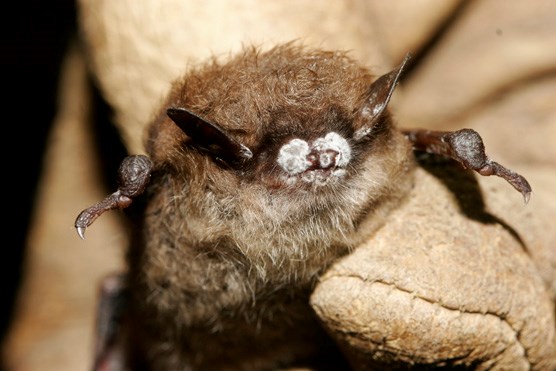
A Threat to Bats in North AmericaWhat is White-Nose Syndrome?White-nose syndrome (WNS) is a devastating fungal disease that has killed millions of bats across North America. The disease gets its name from the white fungal growth, caused by Pseudogymnoascus destructans, that appears on infected bats' muzzles and wings. This fungus attacks bats during hibernation when their metabolic rates and body temperatures are low, making them more vulnerable. Infected bats wake up more frequently during hibernation, depleting their fat reserves and often leading to starvation. Where Did WNS Come From?Research suggests that the fungus responsible for WNS, Pseudogymnoascus destructans, is an exotic species likely introduced from Europe. WNS was first discovered in New York in 2006 and has since spread across more than half of the United States and five Canadian provinces, killing millions of bats. The disease is responsible for rapid population declines, with scientists predicting regional extinction for some bat species. These include the once-common little brown bat (Myotis lucifugus), as well as the federally listed Indiana bat (Myotis sodalis) and northern long-eared bat (Myotis septentrionalis). How Does WNS Spread?WNS spreads through several means:
To prevent the spread:Oregon Caves does not allow any gear, clothing, or shoes that have been in any other cave, mine, or underground space (whether infected or not) from entering the cave system. Does WNS Affect Humans?There is no evidence that WNS can be transmitted from bats to humans. The fungus thrives in cold temperatures (41-68°F), much lower than human body temperature. No human infections have ever been documented from exposure to WNS-infected bats or caves. While WNS does not pose a direct health risk to humans, some bats can carry other diseases like rabies. Bats infected with WNS or rabies may display unusual behavior, such as erratic flying, which can increase the likelihood of human contact. Additionally, the loss of bat populations impacts ecosystems and human health, as bats play a crucial role in controlling pest insects and pollinating plants like bananas, cacao, and agave. Learn More: |
Last updated: September 5, 2024
